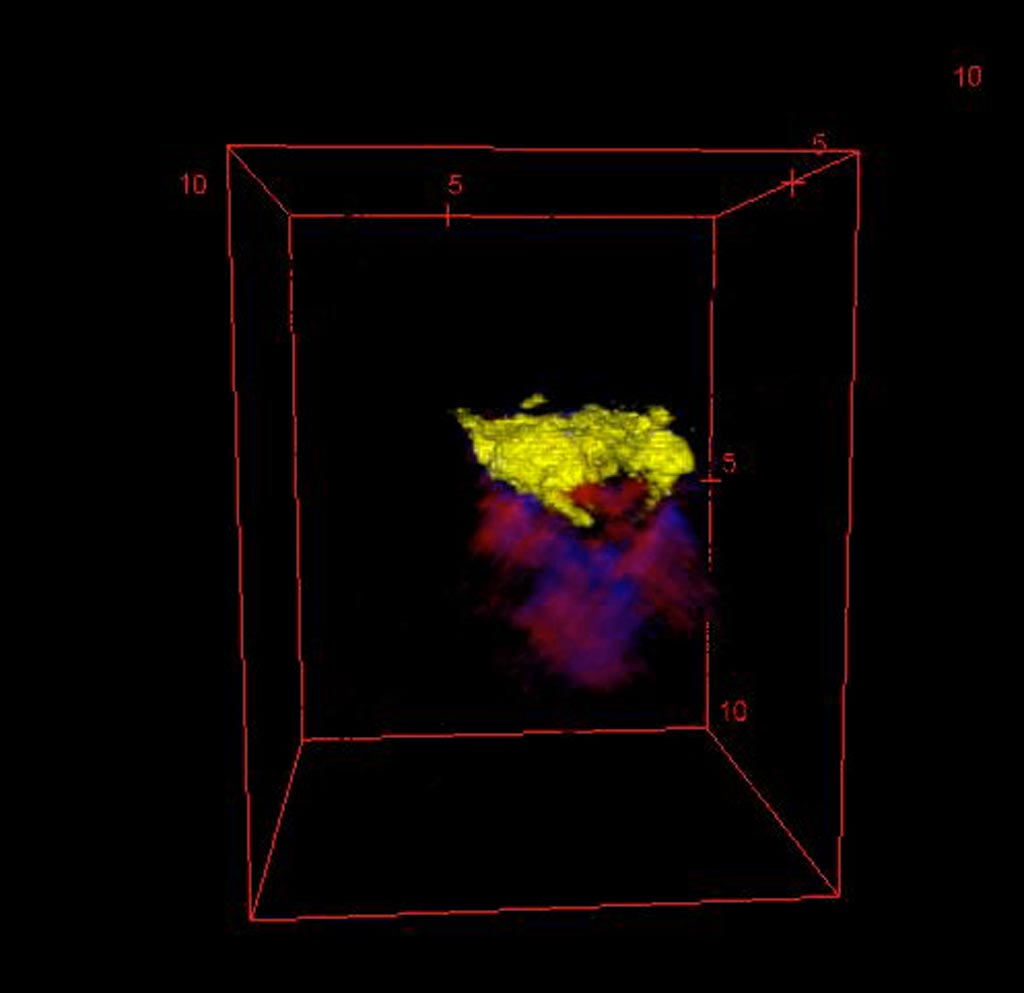Light and Ultrasound Waves Reveal Extent of Skin Cancer
By HospiMedica International staff writers
Posted on 11 Dec 2017
A new study demonstrates that multispectral optoacoustic tomography (MSOT) allows three-dimensional (3D) imaging of deep non-melanoma skin tumors (NMSCs).Posted on 11 Dec 2017
Developed by the Singapore Bioimaging Consortium (SBIC), Munich Technical University (TUM; Germany), the Skin Research Institute of Singapore (SRIS), and other institutions, MSOT is a volumetric imaging technique that can be used to differentiate between tissue chromophores and exogenous contrast agents based on differences in their spectral signatures, and which can provide high-resolution imaging of functional and molecular contrast at centimeter scale depth, providing more precise Mohs micrographic surgery (MMS).

Image: A 3D rendering of a basal cell carcinoma lesion (melanin in yellow, hemoglobin in blue, and oxyhemoglobin in red) (Photo courtesy of M. Olive et al).
The researchers used handheld MSOT probes for 3D imaging in 21 Asian patients with NMSC. The results showed that both tumors and their oxygenation parameters could be distinguished from normal skin endogenously. Lesion dimensions were extracted from the MSOT spectral melanin component with 3D spatial resolution of up to 80 μm, with good correlation to histology of the excised tumors. Real-time 3D imaging also provided data on lesion morphology and the neovasculature, both indicators of the tumor’s aggressiveness. The study was published in the September 2017 issue of Photoacoustics.
“As skin cancer becomes increasingly prevalent, new skin imaging techniques providing non-invasive visualization without the need for excisional skin biopsy can help dermatologists plan the excision surgeries more effectively and accurately,” said lead author Professor Malini Olivo, PhD, head of the bio-optical imaging group at SBIC. “This positively impacts the long-term outcome of these procedures. This first-in-man study has successfully demonstrated that the use of MSOT can vastly improve the accuracy of the diagnosis and effectiveness of the treatment of non-melanoma skin cancer.”
“The ability to image skin cancer in 3D in-vivo will prove to be the disruptive technology for skin cancer management in the future,” concluded senior author Professor Steven Thng, executive director of SRIS. “This will change the paradigm of how skin cancer will be managed, as dermatosurgeons will now be able to visualize the tumor before surgery and individualize surgery based on tumor characteristics and size. This will minimize relapse rates due to inadequate surgery, and reduce unnecessary scarring because of oversampling.”
MMS is a surgical technique for the removal of certain cutaneous carcinomas that allows precise microscopic marginal control. It has become the treatment of choice for several NMSCs, such as basal cell and squamous cell carcinomas at high risk for local recurrence. Advantages of MMS include superior cure rates, maximal tissue conservation, low cost relative to that of radiation therapy, excision, or surgery, and negligible risk of complications from general anesthesia.
Related Links:
Singapore Bioimaging Consortium
Munich Technical University
Skin Research Institute of Singapore














